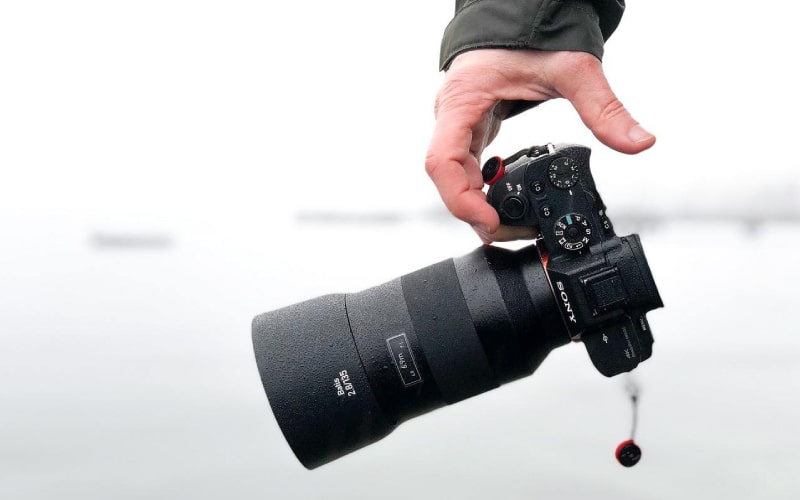“Using images of people from the field may be a more effective fundraising strategy. It may also get you more ‘likes’ and engagement on social media. But is it worth it if you’re potentially invading the privacy of another human being? Is it worth it if you’re potentially violating someone’s dignity?”
Are photography consent forms enough to protect people’s privacy and dignity?
Here at Arqaam, we’re generally not convinced they are.
You might have noticed Arqaam doesn’t use many photographs of people in our communications. If you’re observant, you might find one or two stock photographs in our blog posts. You may have also noticed that the people in those stock photographs are obscured with a coloured filter. These images are also usually creatively framed to avoid focusing on faces. We don’t even use photographs of our staff – instead, we’ve opted for illustrations.
As a general rule, we try to avoid using images of people.
We understand that this is not a viable option for all development actors. However, we’ve put this blog post together because we want to explain why we’ve made this choice. We’ve also compiled some tips for organisations that choose to use images of people in external communications. We believe there are ethical ways to do so.
Why Arqaam generally doesn’t use images of people in our communications:
1) It ensures we aren’t exploiting people’s privacy and dignity
Today, the sense in the humanitarian sector is that if photography consent forms are used, it’s ok to use images of people. And in some cases, this is true.
However, as we wrote in our blog post on informed consent in international cooperation:
“When target groups or individuals of humanitarian and development projects sign consent documents, many project organisers think this is suitable as informed consent. There is not a lot of effort made to ensure that people know what, exactly, will be done with their data or photographs.
When you are undertaking a project in a town or region where there is no internet, and you ask someone who is illiterate “Can I use your image on social media?”, does that person’s “Yes” really count as informed consent if they do not understand what social media is and how the internet functions?”
Clearly, photography consent forms do not always adequately ensure informed consent is present. Subsequently, at Arqaam, we want to set a higher standard for the sector. Implementing photography consent forms and protection policies is important.
 But we believe the sector can do better.
But we believe the sector can do better.
Using images of people from the field may be a more effective fundraising strategy. It may also get you more ‘likes’ and engagement on social media. But is it worth it if you’re potentially invading the privacy of another human being? Is it worth it if you’re violating someone’s dignity?
These issues are amplified in a sector like ours – humanitarianism and philanthropy – in which organisations are usually working with vulnerable people. Protecting the privacy and dignity of the people we work with should be of the utmost importance.
2) It avoids perpetuating harmful development ideologies
In the humanitarian sector, the images we use externally communicate a broader narrative. These narratives are sometimes harmful.
Speaking to NPR, global development communications expert Jennifer Lentfer said:
“People in developing countries are not incapable or passively awaiting rescue. Poverty, conflict, disasters, injustice is heartbreaking, but it doesn’t mean people are victims.”
While the sector generally acknowledges the poor ethics and dangers of “poverty porn”, we believe there are still a number of ethical issues with some of the kinds of images many NGOs use today. Some good questions to ask ourselves include: What kind of narratives do these images communicate? Who are the victims? Who is helping who? In what directions is aid flowing?
Unhelpful images tend to frame people in the global south, or people of colour, as victims and the West as rescuers. They reinforce binaries such as ‘East/West’, ‘developing/developed’ and ‘Global South/ Global North’*. The sector as a whole, albeit slowly, is moving away from these harmful narratives towards more globalised conceptions of development. The images our sector uses needs to do the same thing.
Clearly, photography consent forms can do little to influence the kinds of narratives that images communicate to viewers. This is where policy and communications guidelines can play a role.
Beyond photography consent forms – how to use images of people ethically
Here at Arqaam, we’ve chosen to largely avoid using images of people in our communications. However, if your organisation decides to use images in your marketing or communications, there are a number of steps you can take to do so ethically.
1) Depict agency, not victimhood
As Jennifer Lentfer stated in the quote above, we cannot frame people in developing countries merely as victims. While it is tempting to frame the donor or supporter as the rescuer or the ‘hero’ to attract more funding, narratives such as this are harmful.
Think about it – would you want to be publicly portrayed as ‘helpless’ and as having no control over your life? A victim of circumstance? Our guess is: probably not! So why would the people in your images want to be presented in such a way?
It is possible to tell compelling stories without resorting to the cheap tactics of poverty porn or the frankly unimaginative framing of beneficiaries as victims.
2) Represent the issues accurately
‘Poverty porn’ tends to dramatise humanitarian issues and focus solely on the devastating aspects of a particular issue. Alternatively, there is also a danger in swinging entirely in the other direction.
Speaking to NPR, co-founder of WhyDev, Brendan Rigby said that organisations that show only uplifting images of people in poverty “don’t present a full picture”. Organisations and development actors should instead strive to accurately portray the issues without dramatisation or misrepresentation.
3) Avoid oversimplify the solutions
As the old adage goes, it’s always better to present your audience with solutions instead of problems. Unfortunately, the tendency within the humanitarian sector is to oversimplify the issues and, therefore, the solutions to those issues.
NGO external fundraising narratives, which also play out through the selection and curation of images, typically follow a similar equation to the one below:
Money + the NGO = the solution
However, as the track record of the sector over the last decade has demonstrated, solutions to humanitarian problems are rarely that simple. Subsequently, such simplified representations of solutions are not usually reflective of reality.
One way to avoid oversimplifying solutions is to use your organisation’s external communications to encourage your audience to learn more about the underlying issues and how your organisation is contributing to the solutions. Using images that emphasise partnership and the different elements of solutions are some other ways to ensure your external communications are not oversimplifying solutions.
4) Depict diversity
It is always best practice to include diversity in your external communications. However, depending on the context of your organisation and the nature of your work, this may not always be possible. 
If this is the case, it’s a good idea to go back to our first point and consider how you are representing people of colour and people from the ‘Global South’/ ‘Developing’ countries. Are you representing victimhood or are you representing agency? How are you showing how people of colour are contributing to solutions? Asking these kinds of questions can help your organisation depict harmful, stereotypical development narratives.
5) Use photography consent forms – develop stringent policies and procedures
If your organisation uses images of people, you must ensure you have policies that prioritise protection and informed consent.
Mere policies, though, are not adequate. Your organisation must action them via clear procedures that all staff are aware of and are confident in implementing. Photography consent forms can certainly play a role in this. However, organisations must ensure they are not relying on photography consent forms as the only form of protection for the people they are photographing.
6) Be aware of power imbalances
An important but often-overlooked element relating to the development of policy and procedure is the recognition of power imbalances. Guidelines for ethical NGO content Bond put together some guidelines on the development of ethical content. In it, they stated:
“It is important for all those involved in NGO image making to acknowledge the considerable power imbalances at play in both the production and consumption of NGO images.
… The people being asked to feature in NGO communications are likely to feel obliged to participate, due to their relative lack of power and their existing relationship with the NGO. Image making is often mediated by staff from country programme teams or partner organisations. They are likely to experience more power and privilege than those who are being photographed/filmed, but significantly less than any visiting staff/freelancers from the UK.
These layers of inequality, inherent in the production and consumption of NGO images, are also racialised: those with the most power and privilege are generally white, and those with the least are generally people of colour.”
Recognising these power imbalances will go some way in ensuring that humanitarian communications do no harm.
7) Be creative
They say creativity thrives best when constrained. If your organisation decides to move away from stereotypical fundraising images that focus on beneficiaries’ faces, it could lead to increased creativity!
Using images that creatively distorts or hides the identities of the people you are photographing are often just as beautiful, if not more, than images of faces. This is especially true when photographing children.
So get creative!
For more information about how we collect and store data, see our Data Collection and Cookies Policy page.
* Here at Arqaam, we avoid using phrasing such as ‘East/West’, ‘developing/developed’ and ‘Global South/ Global North’ due to the harmful development narratives such language connotes. In this instance, we are only referring to this language, as opposed to endorsing it.
No camera vector created by freepik – www.freepik.com
Community vector created by rawpixel.com – www.freepik.com

